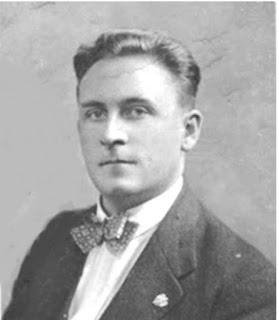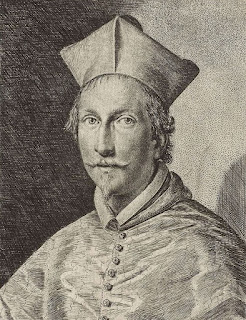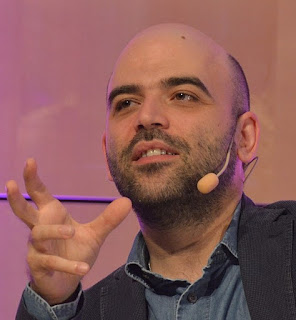Turn of fate led to a life in haute couture
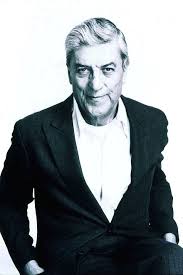 |
| Nino Cerruti ran the family business for more than 50 years |
At its peak, the Cerruti became synonymous with Hollywood glitz and the movie industry, both as the favourite label of many top stars and the supplier of clothing ranges for a string of box office hits
Yet Cerruti might have lived a very different life had fate not intervened. Although Lanificio Fratelli Cerruti - the textile mills set up by his grandfather, Antonio, and his great uncles, Stefano and Quintino - had been the family firm since 1881, Nino wanted to be a journalist.
But when his father, Silvio, who had taken over the running of the business from Antonio, died prematurely, Nino was almost obligated to take over, even though he was only 20 years old.
However, despite the sacrifice of his ambitions and his studies, Cerruti threw himself into developing the business. He saw the potential in repositioning Cerruti as a fashion label and invested in a modernisation plan for the family weaving workshops in Biella as wells as acquiring two further factories in Milan.
 |
| Giorgio Armani learned his trade working for Cerruti |
Cerruti as a high-end name was born in 1967, when Nino opened a boutique in Paris and launched the Cerruti 1881 fashion house. His arrival in Paris was greeted as a sea change in men’s couture, one newspaper article speaking of “the year in which Italian style dethroned English fashion.”
Again, men’s clothing was his speciality, although by 1976 he had designed his first ready-to-wear women’s wear line.
The house launched Nino Cerruti pour Homme in 1978, marking the first of a long line of fragrances and Cerruti 1881 Sport launched in 1980, making clothes for tennis, skiing and running with an haute couture style.
It was in the 1980s that Cerruti became inextricably linked with Hollywood and the movie business.
After being heavily involved with dressing Don Johnson and Philip Michael Thomas in Miami Vice, the company provided clothing for films including Bonnie and Clyde (1967), Wall Street (1987), Pretty Woman (1990) and Basic Instinct (1992).
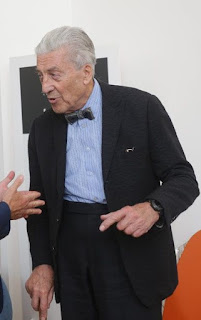 |
| Cerruti still works even in his 80s |
In October 2000, Nino Cerruti sold 51 per cent of the company to investors, who less than a year later bought the remainder of the company. Cerruti, by then 71 years old, stepped down in rather unfortunate circumstances, citing a “perpetual conflict of interest", although he is on good enough terms with the latest owners of the brand to attend every Cerruti fashion show, with a seat on the front row.
The Spring Summer 2002 collection, however, was the last he designed himself.
Since his departure, he has concentrated on the original family textile mill business in Biella, which still operates as Lanificio Fratelli Cerruti and now owns the Italian furniture design company Baleri. He remains involved even at the age of 88.
 |
| A view of Biella, the town where Cerruti was born, which lies in the foothills of the Piedmontese Alps |
Biella is a well-established town of almost 45,000 inhabitants in the foothill of the Alps, about 85km (53 miles) northeast of Turin and slightly more than 100m (62 miles) west of Milan. Its attractions include a Roman baptistery from early 1000s and the church and convent of San Sebastian. Wool and textiles have been associated with the town since the 13th century and although the best years of the industry have now passed, with many mills and factories closed, in addition to Cerruti, brands such as Ermenegildo Zegna, Vitale Barberis Canonico and Fila still have a presence.
 |
| The Via Monte Napoleone is Milan's most famous street for big-name fashion houses |
Milan’s fashion district is known as the Quadrilatero della Moda, sometimes the Quad d’Oro. It can be found a 10-minute walk away from the Duomo in the centre of the city. The area centres on Via Monte Napoleone, a long street is lined with designer fashion boutiques, antiques shops and neoclassical mansions. Most of the major fashion houses - such as Armani, Gucci, Hermès, La Perla, Louis Vuitton, Prada, Ralph Lauren and Versace - Nearby, the Palazzo Morando museum displays period costumes.
More reading:
The hotel lift boy who became a giant of the fashion world
Salvatore Ferragamo - shoemaker to the stars
Ottavio Missoni - war prisoner, Olympic athlete, fashion king
Also on this day:
1773: The birth of Agostino Bassi, the scientist who rescued Italy's silk industry
1955: The birth of singer-songwriter Zucchero
Home

